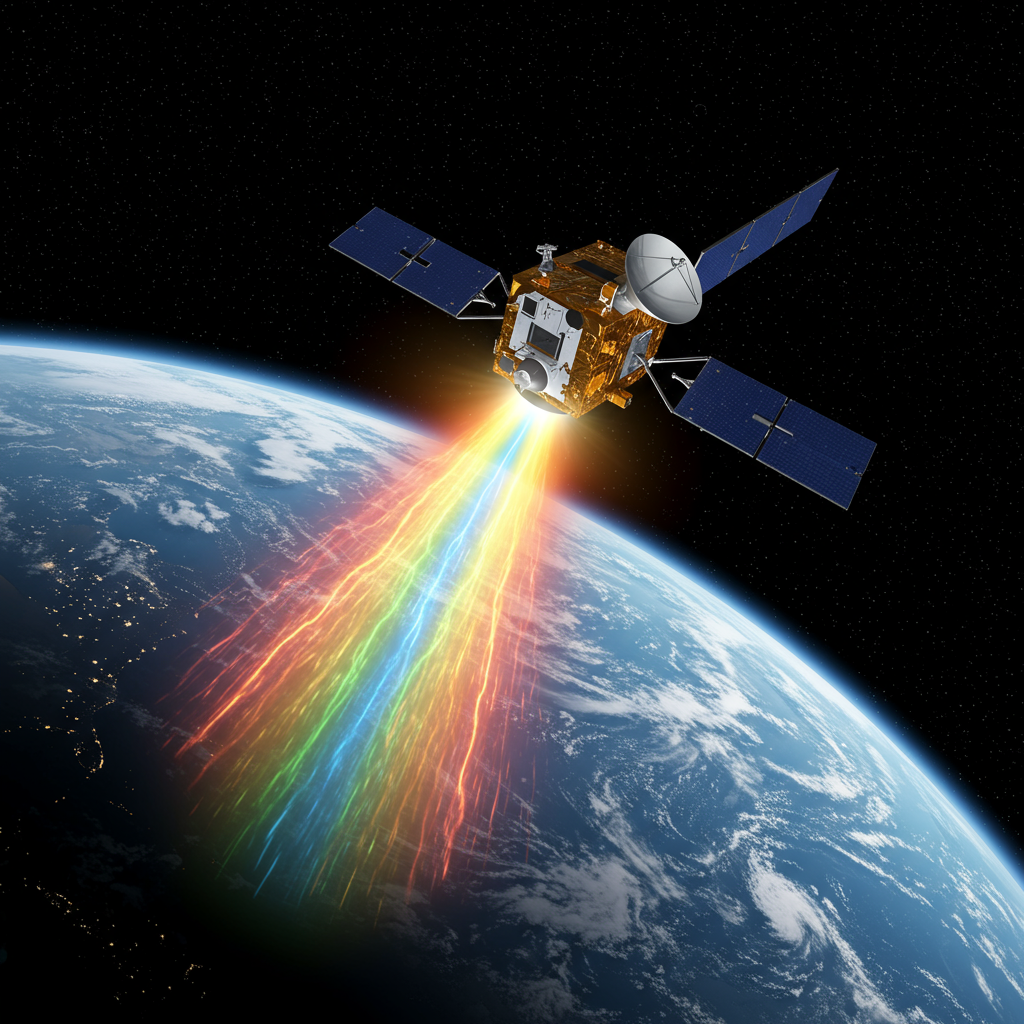MIT has appointed its inaugural Vice President for energy and climate, a pivotal role aimed at dramatically increasing the pace of research and development for groundbreaking climate and energy solutions. Stepping into this historic position is Evelyn Wang, a mechanical engineering professor renowned for her inventive approach to complex challenges, including a device capable of extracting drinkable water from ambient air. Wang is now directing her extensive expertise and unwavering optimism toward confronting climate change head-on, with the critical goals of strengthening America’s energy infrastructure and building a more resilient future for everyone.
Charting a Course for Transformative Change at MIT
Professor Wang officially commenced her duties in this new capacity during the spring, taking the helm of MIT’s rapidly expanding portfolio of initiatives dedicated to climate change. Her mandate involves a broad expansion of the Institute’s already extensive research efforts, actively working to scale up promising innovations, spearheading the quest for entirely new breakthroughs, and ensuring that insights and perspectives from the entire MIT community are integrated to propel this vital work forward. She steps into this role bringing valuable experience, having recently served as the director of the U.S. Department of Energy’s Advanced Research Projects Agency-Energy (ARPA-E) for two years, where she focused on supporting high-risk, high-reward early-stage energy R&D.
“There’s no better place than MIT to come up with the transformational solutions that can help shape our world,” Wang states, emphasizing the Institute’s unique capabilities.
Collaboration is Key to Global Impact
Addressing the global climate crisis, Wang stresses, is not a task MIT can undertake in isolation. Genuine impact requires widespread cooperation. A cornerstone of her strategy involves forging robust partnerships across various sectors.
This includes collaboration with:
Corporate allies
Startups
Government entities
Local communities
- Other research and non-profit organizations
- news.mit.edu
- www.aip.org
- news.mit.edu
- news.mit.edu
- www.technologyreview.com
“It requires a lot of partnerships. It’s not an MIT-only endeavor,” Wang asserts. “We’re going to have to collaborate with other institutions and think about where industry can help us deploy and scale so the impact can be greater.” She believes that expanding the network of partners enhances understanding of the most effective routes for progress in challenging areas. Her experience at ARPA-E, where she supported diverse projects, underscored the importance of bridging the gap between fundamental research and market readiness, often referred to as the “valley of death” for technologies. This firsthand knowledge is invaluable as she seeks to translate MIT’s lab discoveries into real-world applications.
A Deep Connection and Proven Track Record
Evelyn Wang’s relationship with MIT spans over two decades, providing her with an intimate understanding of the Institute’s culture and capabilities. An alumna herself, she earned her undergraduate degree in mechanical engineering from MIT before pursuing her graduate studies at Stanford. She returned to MIT as a faculty member in 2007 and has since held multiple chaired professorships and served as the head of the Department of Mechanical Engineering. Her family also has deep roots at MIT, with her parents meeting there as graduate students and her husband and brothers also being alumni.
Beyond her administrative and academic leadership, Wang is a distinguished researcher leading the Device Research Lab. Her work focuses on identifying novel materials and optimizing processes based on heat and mass transport to enable cutting-edge innovations. This fundamental research approach has led to remarkable applied technologies.
Groundbreaking Innovations Underpinning the Mission
MIT is already a hotbed for climate-related research, with approximately 300 faculty members engaged in diverse projects. Wang’s role involves aligning these widespread efforts and amplifying their collective impact. This includes supporting major initiatives like the Climate Project at MIT, which aims to accelerate and scale solutions while developing new tools and policy frameworks. Wang aims to leverage MIT’s unique strengths to create synergy among these disparate activities.
The type of transformative research Wang champions and oversees includes:
Water from Air Technology
One of Wang’s most celebrated inventions, developed with collaborators, is a device that can pull drinkable water directly from even very dry air, functioning solely on solar or low-grade heat. This innovation, which earned international recognition, utilizes advanced adsorbent materials (like Metal Organic Frameworks in early versions, and later, more abundant zeolites) and a clever multi-stage design that reuses heat generated during condensation. This significantly increases water output compared to previous methods and works effectively at humidity levels as low as 20 percent, offering a potential solution for water scarcity in arid regions without relying on conventional infrastructure or refrigeration.
High-Efficiency Thermophotovoltaic (TPV) Cells
Recent work from MIT researchers, supported in part by the Department of Energy, has demonstrated a revolutionary heat engine with no moving parts – a thermophotovoltaic (TPV) cell. Similar to solar panels but optimized for much hotter sources, this TPV cell has achieved a heat-to-electricity conversion efficiency exceeding 40%, surpassing the typical efficiency of traditional steam turbines. This technology is envisioned as a crucial component in grid-scale thermal batteries that store excess renewable energy as heat, converting it back to electricity on demand. Operating efficiently at extremely high temperatures (up to 2,400°C), these solid-state engines offer a durable and potentially lower-maintenance alternative to complex turbine systems, paving the way for entirely decarbonized power grids.
Advances in Clean Chemical Production
Wang also highlights research into developing cleaner methods for producing essential industrial chemicals. An example cited is recent MIT work focused on creating “clean ammonia.” This process aims to drastically reduce the significant greenhouse gas emissions traditionally associated with the world’s most widely produced chemical, offering a path towards decarbonizing large segments of the industrial sector.
Materials for Future Energy Systems
Another promising area is the development of next-generation materials crucial for advanced energy technologies. The recent establishment of the Schmidt Laboratory for Materials in Nuclear Technologies at MIT’s Plasma Science and Fusion Center is dedicated to research that could enable the construction of future fusion power plants – a potentially limitless source of clean energy.
These examples illustrate the breadth of innovation happening at MIT that Wang will help guide, scale, and translate into real-world impact.
The Power of Optimism in the Face of Challenge
Wang brings not only a sense of urgency about the climate crisis but also a profound sense of optimism about the ability of innovation to meet societal needs. She sees the current period not just as a challenge, but as a significant generational opportunity.
“I think optimism can make a difference, and is great to have in the midst of collective challenge,” Wang remarks. She views this moment as a chance to actively shape the future we desire – one that is cleaner, more sustainable, and more resilient.
Her hopeful perspective is rooted in the caliber of talent and the mission-driven environment at MIT. “We’re such a mission-driven university, and people come here to solve real-world problems.” She believes that MIT’s inherent strengths in research, innovation, and education are precisely what are needed to bring this crucial optimism to the global climate effort.
Frequently Asked Questions
What is the role of MIT’s first Vice President for Energy and Climate?
Evelyn Wang, as the first person in this position, is responsible for leading and accelerating MIT’s extensive efforts in climate and energy research and development. Her role involves broadening the scope of research, scaling up existing innovations, seeking new breakthroughs, integrating community input, and forging essential partnerships with industry, government, and other organizations to ensure solutions have a real-world impact and strengthen energy resilience.
What specific clean energy technologies is MIT developing under Evelyn Wang’s leadership?
While overseeing a vast portfolio, key examples of innovative technologies emerging from MIT include advanced systems to extract drinkable water from air using solar or low-grade heat, highly efficient thermophotovoltaic (TPV) cells for converting heat directly into electricity (potentially for grid-scale thermal batteries), processes for producing chemicals like ammonia with drastically reduced emissions, and researching next-generation materials vital for future energy sources like fusion power.
How does Evelyn Wang’s experience at ARPA-E inform her work at MIT?
Evelyn Wang’s two-year tenure as director of the U.S. Department of Energy’s ARPA-E provided her with critical experience in funding and supporting early-stage, high-risk energy research aimed at transformative outcomes. This role gave her insights into the challenges of translating foundational research into marketable technologies (the “valley of death”). This knowledge is crucial in her MIT role as she focuses on not just developing innovations but also creating the partnerships and pathways necessary to scale these solutions and ensure their deployment for maximum impact.
Driving Towards a Sustainable Future
Evelyn Wang’s appointment as MIT’s first Vice President for Energy and Climate signals a significant institutional commitment to tackling the world’s most pressing environmental and energy challenges. Her background as an inventor, her leadership experience at a key federal energy innovation agency like ARPA-E, and her deep understanding of MIT’s ecosystem position her uniquely to accelerate the development and deployment of transformative solutions. By fostering collaboration, leveraging the Institute’s vast research strengths, and maintaining a sense of urgent optimism, Wang is poised to lead MIT’s efforts to shape a cleaner, more sustainable, and resilient future.




